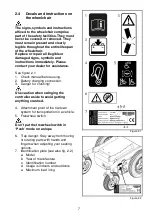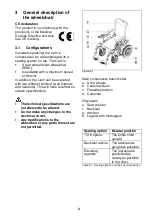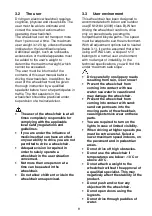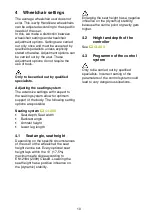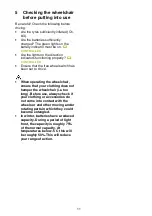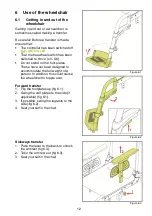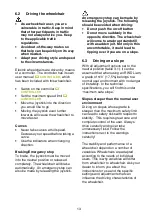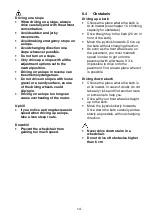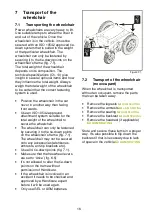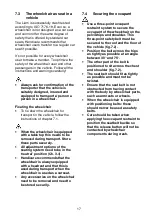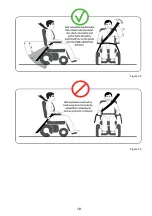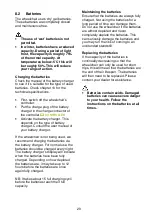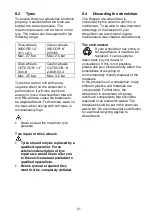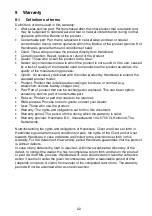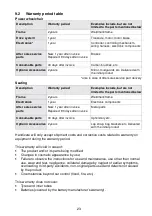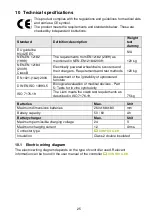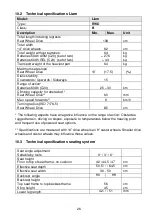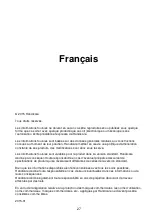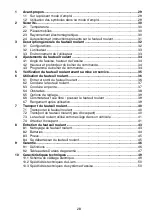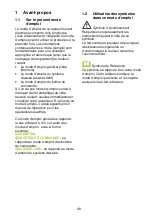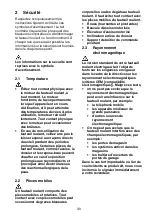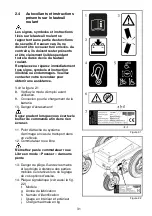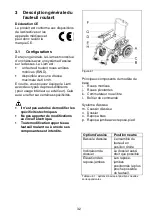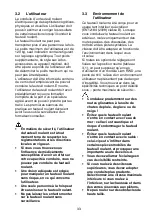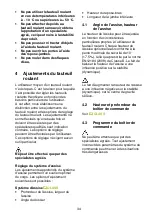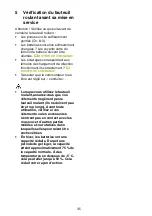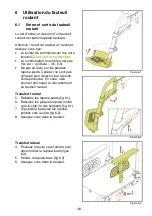
21
8.3
Tyres
To ensure that your wheelchair functions
properly, it essential that the tyres are
kept at the correct pressure. The
maximum pressure can be found on the
tyre. The values can be expected in the
following range:
Drive wheels
INDOOR: 12”
12½ x 2¼
Castor wheels
INDOOR: 8”
200x50
Max. 2.7 bar
Max. 2.5 bar
Drive wheels
OUTDOOR: 14”
3.00-8
Castor wheels
OUTDOOR: 9”
2.80/2.50-4
Max. 3.5 bar
Max. 3.5 bar
Tyres that are too soft will have a
negative effect on the wheelchair’s
performance. It will also cost more
energy to move the wheelchair forward
and this will also cause the batteries to
be depleted faster. Furthermore, wear on
the tyres when driving with soft tyres is
unnecessarily high.
•
Never exceed the maximum tyre
pressure.
Tyre repair of drive wheels
•
Tyres should only be replaced by a
qualified specialist. For an
extensive description of tyre
repairs we would like to refer you
to the service manual available to
qualified specialists.
•
Before tyres are repaired they
must first be completely deflated.
8.4
Discarding the wheelchair
The lifespan of a wheelchair is
influenced by the extent to which it is
maintained. To be able to take maximum
advantage of the lifespan of your
wheelchair we recommend regular
maintenance (see chapter maintenance).
The environment
If your wheelchair has come to
be superfluous or needs to be
replaced, it can usually be
taken back by your dealer in
consultation. If this is not possible,
please ask your local authority about the
possibilities of recycling or
environmentally friendly disposal of the
materials.
In the production of a wheelchair, many
different plastics and materials are
incorporated. Furthermore, the
wheelchair is comprised of various
electronic components that should be
disposed of as electronic waste. The
batteries should be put in the chemical
waste bin. No environmental contribution
for eventual recycling applies to
wheelchairs.

